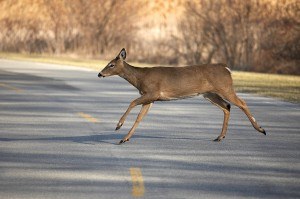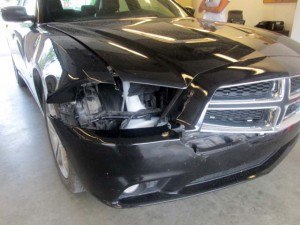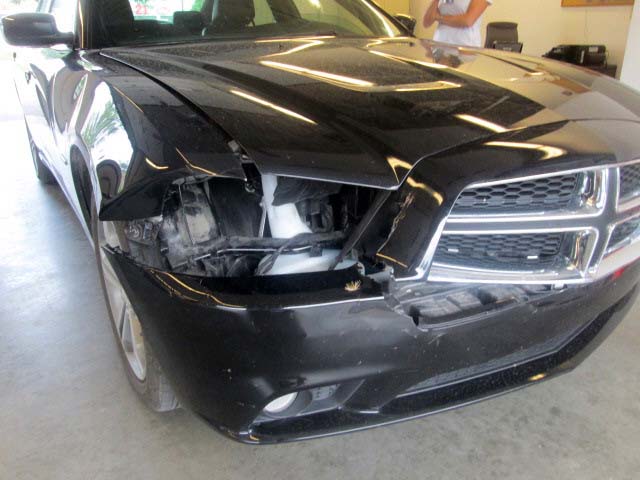U.S. drivers are nearly 3 percent more likely to collide with a deer in the next 12 months than they were last year, according to new claims data from State Farm. The odds drivers will hit a deer in the coming year are 1 out of 169, but that likelihood more than doubles during October, November and December, when deer collisions are most prevalent.
For the eighth year in a row, West Virginia tops the list of states where a collision is most likely. The odds a driver in the Mountain State will collide with a deer are a staggering 1 in 39, nearly a 5 percent increase compared to 2013. Hawaii rounds out the bottom of the list also for the eighth year in a row with odds of 1 in 10,281. Hawaiians are three times more likely to get struck by lightning in their lifetime than they are to hit a deer in the next year.
The top five states where a driver is most likely to collide with a deer are:
| Rank | State | 2014 Odds | Percent + /- from 2013 |
| 1 | West Virginia | 1 in 39 | + 4.9 |
| 2 | Pennsylvania | 1 in 71 | + 7.8 |
| 3 | Montana | 1 in 75 | – 15.4 |
| 4 | Iowa | 1 in 77 | – 5.5 |
| 5 | South Dakota | 1 in 82 | – 9.3 |
Injuries, vehicle damage and fatalities all can result from vehicle collisions with deer. In 2012, 175 deaths were the result of collisions with animals, with deer being the animal most often struck, according to the Insurance Information Institute and the Insurance Institute for Highway Safety.
Reasons why odds go up or down in 2014:

Deer collisions rose by more than 21 percent in Indiana and more than 8 percent in Virginia this year. This is the first year South Carolina is in the top 10 with a 1 in 93 chance of colliding with a deer. What causes these significant changes in deer collision rates?
“Periods of daily high-deer movement around dawn and dusk as well as seasonal behavior patterns, such as during the October-December breeding season, increase the risk for auto-deer collisions,” said Ron Regan, executive director for the Association of Fish & Wildlife Agencies. “Changes in collision rates from year to year are a reflection of changing deer densities or population levels – more deer in a given area increases the potential for collision. Deer populations are also affected by conditions such as new or improved roads with higher speeds near deer habitat, changes to hunting seasons to manage wildlife, winter conditions, and other related factors.”
More 2014 State Farm deer collisions facts:
- The national cost per claim average is $3,888, up 13.9 percent from 2013 ($3,414).
- The months a driver is most likely to collide with a deer in the U.S., mostly due to mating and hunting seasons, are November, October and December.
- Ten percent of the country’s deer collisions occur in Pennsylvania (123,941 collisions), though when taking into account the amount of licensed drivers in the state, West Virginia still edges out as number one with a likelihood of 1 in 39 compared to Pennsylvania’s 1 in 71 (second ranked state).
Source: State Farm
Was this article valuable?
Here are more articles you may enjoy.


 Uber Warns NYC Response to Insolvent Insurer Exposes Drivers
Uber Warns NYC Response to Insolvent Insurer Exposes Drivers  Jane Street-Millennium Trade Secrets Fight Ends in Settlement
Jane Street-Millennium Trade Secrets Fight Ends in Settlement  Consulting Firm McKinsey to Pay $650M to Resolve Criminal Opioid Probe
Consulting Firm McKinsey to Pay $650M to Resolve Criminal Opioid Probe  Cargo Theft Surges as Holiday Season Approaches, Verisk Says
Cargo Theft Surges as Holiday Season Approaches, Verisk Says 